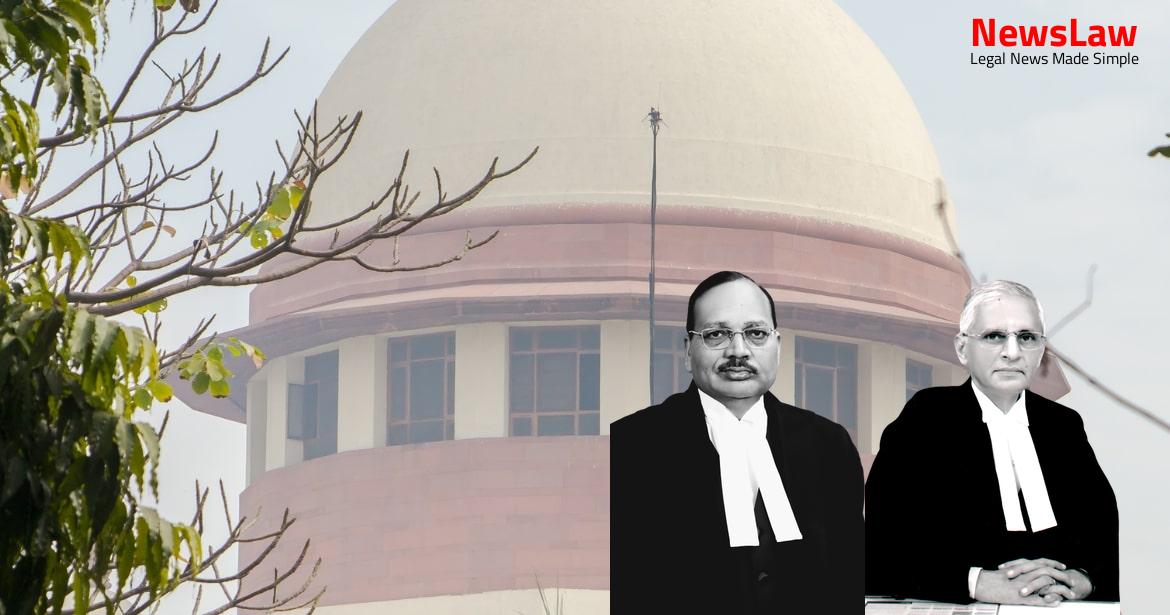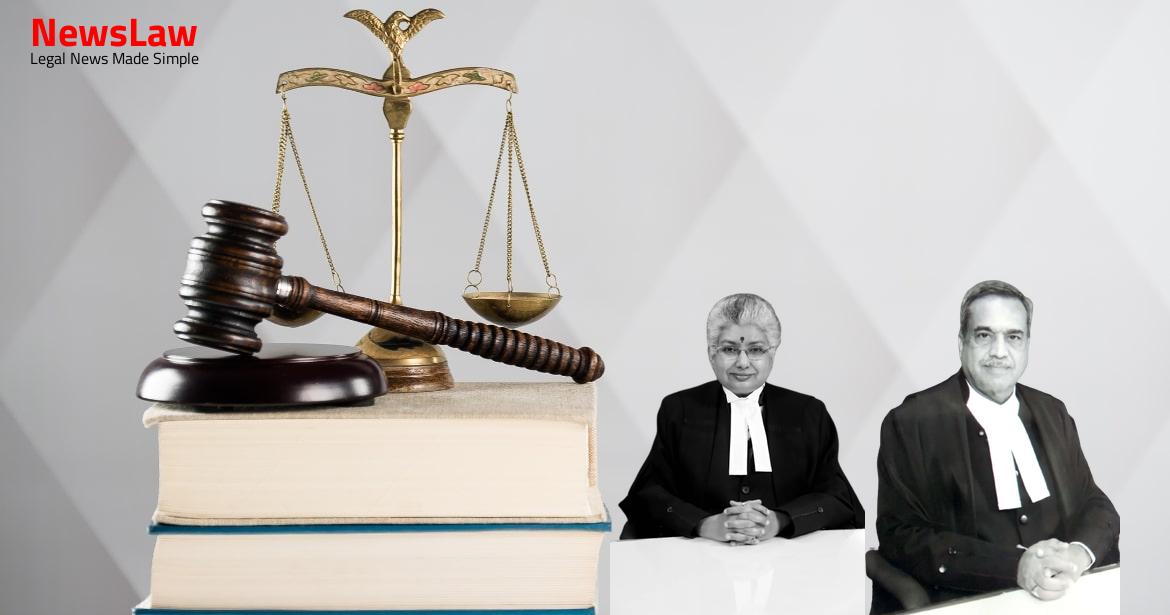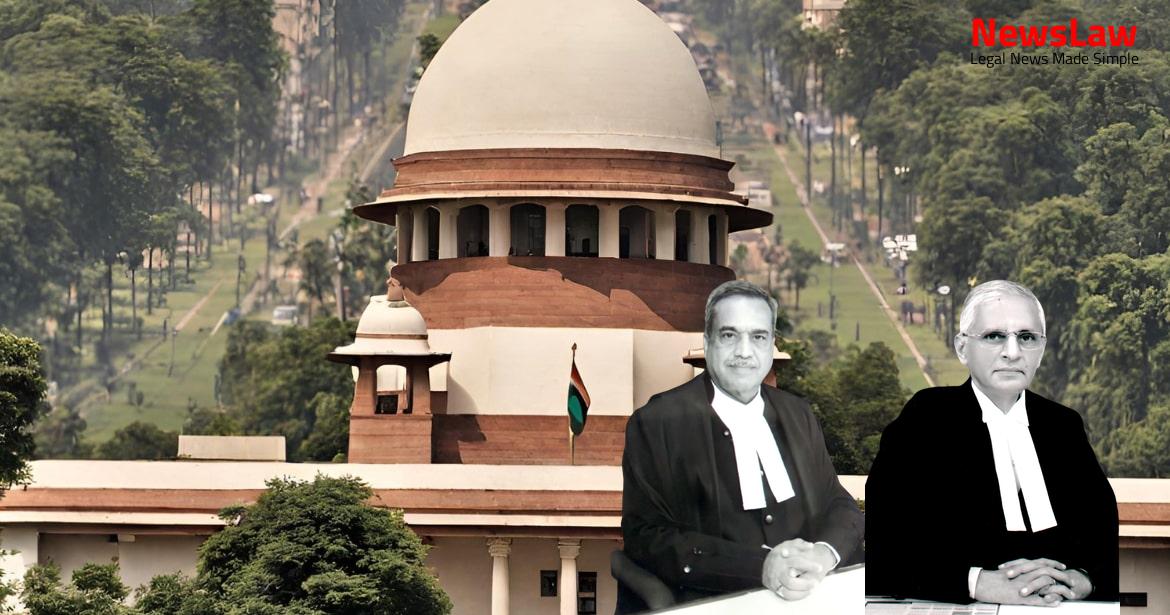Explore a detailed legal analysis of a medical negligence case concerning the administration of anaesthesia. Dive into the intricate court rulings and assessments regarding negligence, expert opinions, and the standards of medical care in such situations. This summary delves into the complexities of legal scrutiny in medical malpractice cases, providing valuable insights for those interested in understanding the nuances of such legal proceedings.
Facts
- The appellant in C.A. No.7380/2009 administered injections of Pentothal Sodium and Scolin as per medical practice.
- The appellant hospital filed a suit for recovery of balance medical bills triggering a criminal complaint and compensation claim as a counter blast.
- The NCDRC held the appellants guilty of medical negligence and directed payment of Rs.17,00,000/- with interest.
- The patient was diagnosed with Hydronephrosis Grade IV in the right kidney and Grade II in the left kidney, leading to the decision to operate on the less affected left kidney first.
- Endotracheal tube of 7.5 mm diameter was inserted in the trachea for administering nitrous oxide and oxygen.
Also Read: Supreme Court Upholds Rejection of Plaint Under Order VII Rule 11 of CPC: A Critical Analysis
Arguments
- The learned counsel for the respondent No.1 disputes the claim that the patient insisted on surgery for the other side on 14.12.1996 and argues that it was an insertion.
- On 16.12.1996, the patient suffered a cardiac arrest immediately after anaesthesia was administered, leading to negligence accusations towards the hospital for not having a ventilator.
- Concerns were raised about the adequacy of the Boyle’s apparatus and the anaesthetist’s claim of manually operating it for an extended period.
- It is emphasized that hospitals and doctors must exercise sufficient care in treating patients, especially in high-risk situations, despite unfortunate outcomes like death.
- The necessity of having substantial medical evidence before concluding medical negligence is highlighted.
- The high-risk nature of the second operation was communicated to the patient, and the occurrence of cardiac arrest was explained as a known risk that the doctors prepared for.
- The observation on poor tolerance to anesthesia was downplayed, citing the success of the earlier operation without major issues related to anesthesia.
- Reference is made to a Supreme Court decision stating that not every untoward incident amounts to medical negligence.
- Detailed references to the patient’s history and hospital records were made by the appellants and the hospital counsel to refute claims of negligence.
- The absence of a public address system or paging service in the hospital is noted as causing a delay in getting a physician to attend to the patient after the cardiac arrest.
- In cases where negligence is evident, the principles of res ipsa loquitur apply, shifting the burden of proof to the respondent.
- Respondent must prove that proper care was taken to repel the charge of negligence.
- In the case of V. Kishan Rao, RW1 admitted that the patient was not treated for malaria.
- Simply because a patient does not respond favorably to treatment or a surgery fails, does not constitute medical negligence.
- Failure of treatment does not automatically imply negligence; strong evidence is needed to prove negligence.
- The decision in Martin F.D’Souza vs Mohd. Ishfaq clarifies that the doctrine of Res Ipsa Loquitor cannot be applied without substantial evidence of negligence.
- The decision in V. Kishan Rao vs Nikhil Super Speciality Hospital states that general directions on securing medical reports are not always binding precedents and must be considered in light of specific facts.
Also Read: Validity of Debt and Enforcement of Section 138 NI Act
Analysis
- The NCDRC concluded that the anaesthesiologist disregarded the note about poor tolerance to anaesthesia without consultation.
- The NCDRC relied heavily on an enquiry report rather than medical evidence provided by the appellants.
- The NCDRC assumed negligence without substantial medical evidence supporting the claim.
- The anaesthetist had experience with over 25,000 patients and successfully administered anaesthesia in the past.
- The NCDRC’s conclusion lacked backing from medical evidence and relied on perception rather than analysis.
- The issue of consent only being taken from the patient’s husband for the second surgery was also raised.
- The NCDRC’s observation regarding negligence was questioned due to lack of concrete evidence or expert opinion.
- The principle of res ipsa loquitur was discussed in the context of glaring negligence.
- The importance of substantial medical evidence in determining negligence was highlighted throughout the analysis.
- Negligence in diagnosis or treatment by a doctor should be judged based on whether the doctor failed in a way no doctor of ordinary skill would, if acting with ordinary care.
- No automatic assumption of negligence should be made against a medical professional.
- Each case must be assessed based on its own facts, without following a mechanical approach.
- In the case of S.K. Jhunjhunwala vs Dhanwanti Kaur, negligence was alleged due to suffering ailment from improper surgery, which requires a direct nexus to sue a doctor for negligence.
- An accident during medical or surgical treatment refers to an unintended and unforeseen injurious occurrence not in the usual course of events, with a broader meaning in this context.
- The principles of medical negligence as a tort, as laid down in Jacob Mathew case, were evaluated in Nizam’s Institute of Medical Sciences vs Prasanth S. Dhananka.
- In the Nizam’s Institute case, negligence by attending doctors was proven based on a medical report indicating the need for a neurosurgeon for a tumour in the left upper chest, which was not attended to.
- Second operation should not have been conducted as per NCDRC observations, leading to other issues against appellants without expert opinion.
- Mere reliance on magisterial enquiry not sufficient without medical evidence.
- Opinion of civil surgeon in report not conclusive as report lacks statutory flavor and surgeon not available for cross-examination.
- Correctness of treatment and decision to operate required consideration in light of medical evidence.
- Legal principles and general standards insufficient without specific medical evidence in this case.
- NCDRC conclusion of negligence based on legal principles without contrary medical evidence on record.
- Surgeon and anaesthetist recognized as qualified and experienced, yet deemed negligent by NCDRC.
- Technical medical issues such as anaesthesia tolerance and timing of operations required expert opinion, lacking in this case.
Also Read: Enlargement on Bail in Illegal Mining Case
Decision
- The order dated 13.08.2009 passed in O.P. No.289 of 1997 has been set aside.
- There shall be no order as to costs.
- The appeals have been allowed.
Case Title: DR. HARSIH KUMAR KHURANA Vs. JOGINDER SINGH . (2021 INSC 451)
Case Number: C.A. No.-007380-007380 / 2009



